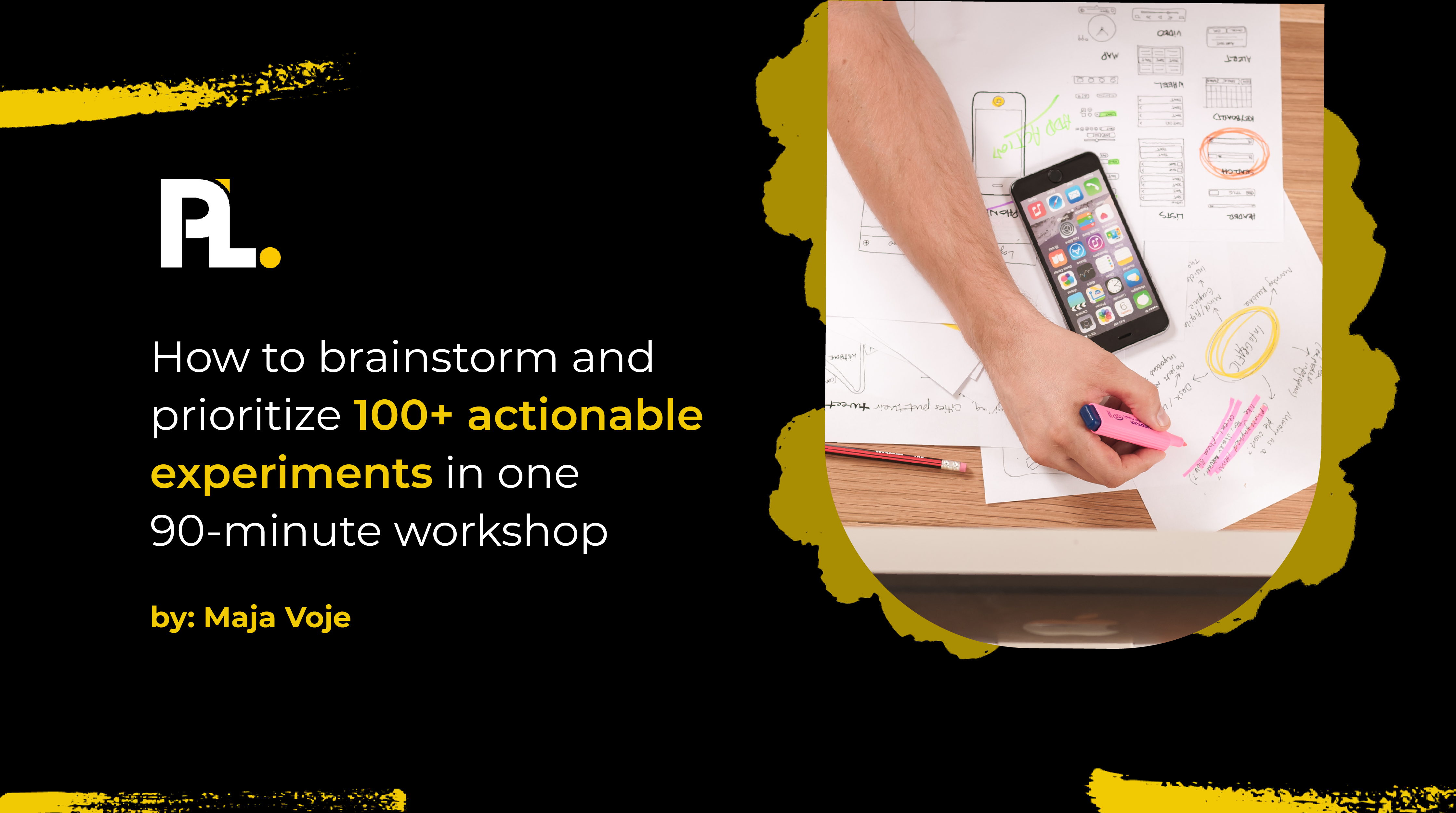
It’s always an adventure to join a startup. The level of uncertainty is high, but you still have to run as fast as you can in this darkness to make a light.
I joined Miro as the 55th employee, and I went through all the stages of growth on the way to Unicorn — business model changes, enterprise clients, innovative features launches, rebranding, pandemic boom, and the beginning of becoming enterprise when the company grew to 1,700 employees.

It was like working in a different company every 6 months.
First, I was working on the entire growth funnel — virality, activation, engagement, and monetization. Then I was focused on product onboarding and virality. In my final two years, I was working on activation and templates experience.
Working in a rocketship like that is challenging, interesting, and hard sometimes.
Here are the 14 main lessons after five years of this adventure:
- Growth is not only about fast metrics optimization and running as many experiments as you can. You have to think out of the box and implement innovative features and solutions. You should have a good proportion of optimization, innovation, and tech in your roadmap – and be divided about 40/40/20. (That can change depending on the product growth stage.)
- You are the only person who is 100% responsible for your personal and career development. Use all of your resources to grow — your manager, networking, mentor support, books, and courses. A great manager should help you grow, not just within your company, but also helping with your next career steps. I was lucky to have a manager like that: driving my development, invested time into my growth, and inspired me. Remember — 1:1s with your manager are created for your growth, not just for discussion of a task's progress.
- Team culture is something that matters the most. Employees also have to match your cultural values. You can support the startup culture within the team, even if the company is no longer a startup and the culture has changed. I invested a lot of time and effort in team culture — kept the growth mindset for every team member, set up clear processes, provided full clarity about what metrics, and problems we were working on and maintained the “work hard and have fun together” approach.
- You have to see opportunities to learn from other people, from their experiences and knowledge. When the company grows, a lot of professionals from great companies join, and that can be a valuable source of inspiration and development. Set up monthly/quarterly 1:1s with the most interesting ones so you can exchange your learnings on the regular basis. I also like to exchange experiences with people from other companies.
- Delegate and create common ownership in the team. Think about what can help your team grow to collaborate and share experiments. We created a common ownership on the team; every developer had his/her own feature or experiment to drive. It improved our team’s results and engagement and helped team members develop their skills and grow faster. It saved me a lot of time and focus.
- Partner proactively with other teams and drive impact together. The biggest impact was when we worked on the templates experience as a cross-functional team between Content, Marketing, and Growth. As a Growth Product Manager, I realized how important it is to work collaboratively on different parts of the user experience to have better results – together.
- Stakeholders often want to share ideas and make you implement them. On the one hand, it’s important to take into account their opinion and receive support from them. On the other hand, you shouldn’t blindly do everything they ask. Instead of implementing, we gave them an opportunity to share ideas using regular brainstorming sessions. Then, we prioritized them accordingly with other experiments. We made this process clear and transparent for stakeholders, which helped us make a bigger impact.
- Understand what growth opportunities and drivers you have in your product and which of them you can and have to work on right now. For that, you need to have extensive market knowledge, be data-informed, and also define and design the metrics you are driving correctly. Metrics are not only inspirational and represent value, but also should be easily calculated and driven by practice.
- Delegate parts of your job on a regular basis; it’s the only way to grow. In the first year, I was working on the entire funnel, and it was hard to focus, drive impact, as well as have extensive knowledge about users. It's not always easy to delegate. But I definitely knew that more Growth Product Managers would help to drive impact, and it also helps me stay more focused.
- A business model should experiment regularly because the market is changing as well as your users and their behavior. During these five years at Miro, there were at least five changes: moving from a free trial to a freemium model, adding new consultant and business plans, several changes in free plan limits, etc.
- User research should take place in every step — problem definition, solution testing, and after experiments to understand why users behave with your solution. Even if you have a UX research team, I recommend running user research by yourself a lot to actively engage your team in the process. If you have your users’ problems at your fingertips, you can create the best solutions for their problems. Your team can see them as real users, which helps them feel empathy, generate ideas, and see how they work. I will never forget how we ran dozens of user interviews with users all around the world.
- Product strategy is an iterative collaborative work. At Miro, I was working on two Product strategies — new users’ experience and templates. It was not a great way to work. The team didn’t feel like an owner of this vision, and there were several crucial missing parts. It was better to collaborate on a strategy with the team from the beginning. The results were more comprehensive, and the team was more engaged in the implementation. Remember, strategy is a live document that you have to review quarterly; it's ok to make changes using your learnings.
- If you want to develop specific skills or gain experience, and there is no way to develop them in your current company, think about additional projects. E.g. working as a mentor or advisor, or having your own pet project. Be sure this is allowed in your company, and it doesn’t affect your main job. I mentored Product Growth Managers for two years and helped them develop their careers. I also have been working as a Growth Advisor and helped companies to grow their key metrics — retention and revenue. It gave me experience in people management and with products from different spheres.
- And finally, to grow, your Growth team needs to work as a system. Acquisition, activation, retention, and monetization should all be aligned to drive the same goal. There shouldn’t be a case where acquisition is driving good leads which are not being activated and/or converted in the next stages.
I have many more lessons in mind, but let’s stop with these 14 now. Based on them, here are the top five action items you can take right now:
- Set up a 1:1 with a Growth Product Manager (or someone else in your company) to exchange experiences.
- Check your roadmap for a good balance of optimization, innovation, and tech tasks.
- Organize at least one ideation session for stakeholders so they can share their ideas for driving metrics and improving user experience.
- Review the metrics you’re currently driving and ensure they fit the criteria.
- Check if your Growth team is working collaboratively and driving common outcomes rather than moving in individual directions.
And one small final piece of advice here: when you leave a company, invest your time in off-boarding and onboarding other Growth Product Managers.
That sets a good tone.





%20(1).png)















